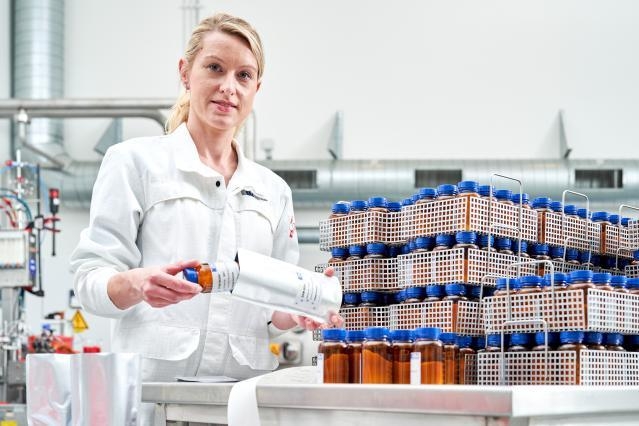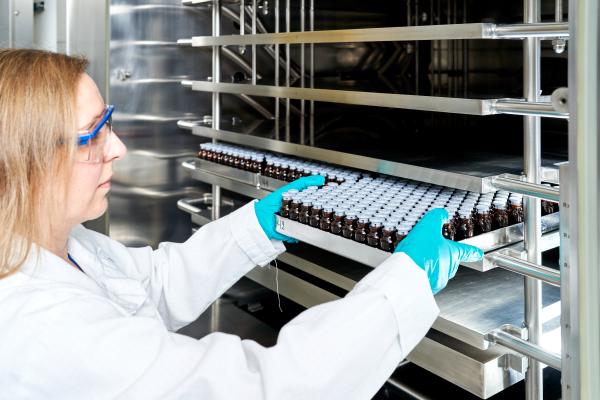The RMP contributes to the production of Certified Reference Materials to support and implement European Legislation.
The laboratory encompasses competencies, methods and instrumentation for reference material production and development (material processing, testing of homogeneity, stability and characterisation).
Worldwide demand for new reference materials
Worldwide, there is an increasing demand for new reference materials for a broadening range of applications and a greater variety of analyte-matrix combinations. In striving to meet this demand, reference material producers have to handle a wider variety of less stable materials, especially those of biological origin, often running a greater risk of cross-contamination during processing.
For this reason, the JRC decided several years ago that new facilities were needed for its reference material programme, in order to be able to adapt the targeted measurement benchmarks in response to changing requirements. The result is a scientific and technical facility with specialised laboratories and a versatile pilot plant for material processing.
Developing reference materials in support of EU legislation
The facility consist of a new processing hall that bridges the gap between laboratory and industrial scale, and will enable the JRC to remain at the forefront of reference material development and production. The facility will support EU legislation by providing laboratories worldwide with standardized benchmarks for delivering accurate, harmonized, and traceable results.
The building features a material-processing hall that provides for parallel material handling, equipped with movable walls and separate air-handling systems. This design allows the hall to be divided into up to four separate areas, facilitating parallel material handling and enabling the simultaneous processing of four different reference materials without the risk of cross-contamination. This unique capability sets the facility apart from other major producers of reference materials worldwide.
Moreover, adjacent to the processing hall are several dedicated rooms to support the main processing areas. These rooms allow a logical sequence of activities and equipment including washing and handling of glassware, capping and labelling of vials and a process control laboratory incorporating microscopy, particle size analysis and measurements of water content.
The building also houses several other laboratories and equipment.
- Bio-safety laboratories (level class 3): equip the European Commission with an in-house facility for the safe handling of potent human pathogens (bacteria and viruses). A sequence of six laboratories has been designed to host microbiology and protein chemistry using, for instance, high resolution organic mass spectrometry. Access to bio safety cabinets, a waste autoclave and a cool-cell make these labs also highly suitable for supporting the developments in the field of clinical reference materials.
- Three laboratories for element analysis: One laboratory is equipped for sample preparation, featuring metal-free clean benches, fume hoods and with high-capacity digestion systems for mineralisation of samples. The two other laboratories house an inductively coupled plasma mass spectrometer, a solid sampling atomic absorption spectrometer and an inductively coupled plasma optical emission spectrometer, mainly used for the measurement of trace elements.
- A laboratory for the processing of water reference materials: it consists of 4 x 500 litre drums which can be made into one volume of 2000 litre thanks to the inert pumps that re-circulate water in the system.
In addition, the facility includes a new freeze dryer and equipment for manipulating and stabilising slurries and pastes for the provision of solid but wet reference materials.
Media


The Reference Material Production laboratory of the JRC in GeelFilling of clinical samples in a clean cell 

JRC Geel - Processing of an infant formula reference materialThe Reference Material Production laboratory of the Joint Research Centre (JRC) in Geel, Belgium, encompasses competencies, methods and instrumentation for reference material production and development. 

The Reference Material Production laboratory of the JRC in GeelLoading of an autoclave with samples to be thermally sterilised 

The Reference Material Production laboratory of the JRC in GeelLoading of vials in a freeze dryer 

The Reference Material Production laboratory of the JRC in GeelFilling of an infant formula into glass bottles inside a glove box

